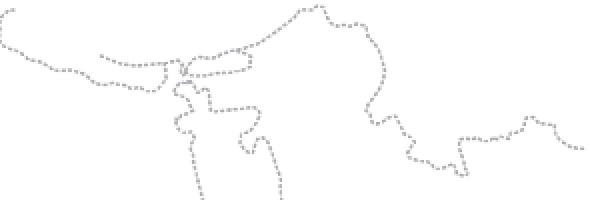Travel Reference
In-Depth Information
e
0
800 km
#
0
500 miles
TASH RABAT
KASHGAR
The Silk Road was once lined with
rabat
, or caravanserais, built to offer
food and shelter to passing caravans.
This 'Stone Caravanserai' in the high
pastures of Kyrgyzstan is Central
Asia's best.
This great Central Asian entrepôt
remains a vital Silk Road hub at the
junction of trade routes to Fergana,
the Wakhan, Hunza and the jade
markets of Khotan (China).
NORTHERN ROUTE
This route through the Zhungarian
Gap, along the north of the Tian Shan,
offered easier travel and better
pasture for caravans but was also
more prone to nomadic raids.
RUSSIA
XI'AN (CHANG'AN)
Karakoram
The beginning and end of the Silk
Road, Tang China's capital was home
to a cosmopolitan mix of Central
Asian traders, musicians and such
exotica as Samarkand's famed golden
peaches.
MONGOLIA
Lake
Balkash
Gobi
Desert
Hami
Turpan
Balasagun
Gansu
Jade
Gate
KYRGYZSTAN
Corridor
Loulan
Kucha
Dunhuang
Luoyang
Aksu
Miran
Taklamakan
Desert
Kashgar
Xi'an
(Chang'an)
Yarkand
DUNHUANG
Khotan
C H I N A
The best example of Silk Road artistic
fusion, with Central Asian, Tibetan,
Indian and Chinese influences
blending in spectacular Buddhist cave
murals on the edge of the desert.
Leh
Lhasa
TIBET
Delhi
BHUTAN
NEPAL
JADE GATE
INDIA
Jade from Khotan was as important a
Silk Road product as silk. This
customs gate and defensive garrison
marked the division between the
Central Asian and Chinese worlds.
Gulf of
Tonkin
BANGLADESH
INDIA
TASHKURGAN
SOUTHERN ROUTE
:
The 'Stone Tower' was one of the
great trading posts of the Silk Road,
half way along the route and a place
of pause before the tough mountain
or desert crossings to come.
A string of oases along the fringes of
the Taklamakan Desert made this
tough desert stretch feasible, until
climate change dried wells and
covered its cities with shifting sand.
:
:
:
:
:
:


























































































































































































